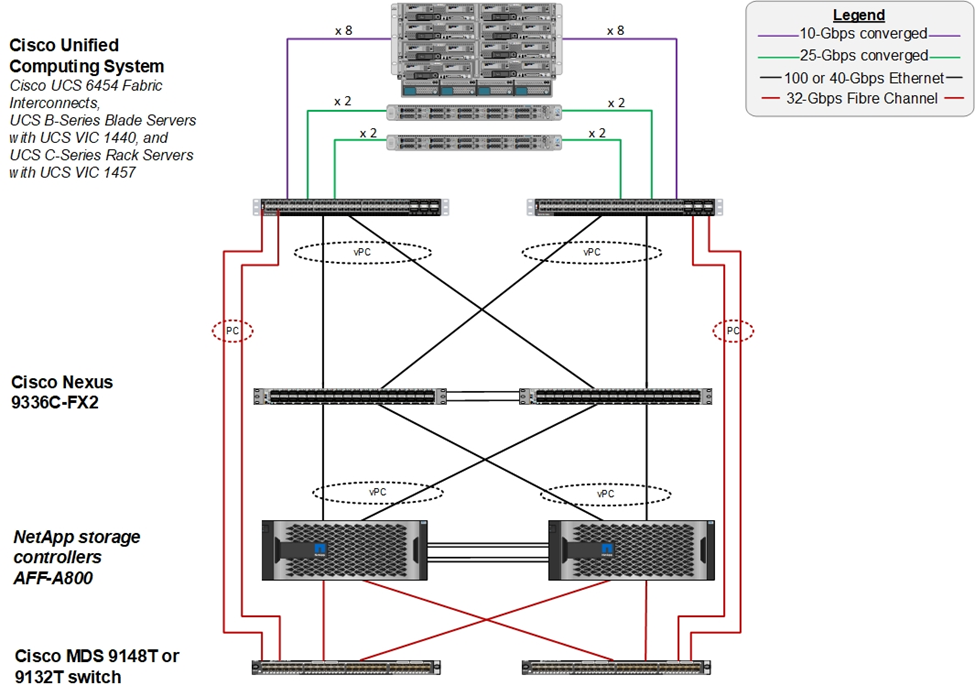FlexPod Overview
 Suggest changes
Suggest changes


FlexPod is a predesigned, integrated, and validated architecture that combines Cisco Unified Computing System (Cisco UCS) servers, the Cisco Nexus family of switches, Cisco MDS fabric switches, and NetApp storage arrays into a single, flexible architecture. FlexPod solutions are designed for high availability with no single points of failure, while maintaining cost-effectiveness and design flexibility to support a wide variety of workloads. A FlexPod design can support different hypervisors and bare metal servers and can also be sized and optimized based on customer workload requirements.
The figure below illustrates the FlexPod architecture and clearly highlights the high availability across all the layers of the stack. The infrastructure components of storage, network, and compute are configured in such a way that the operations can instantaneously fail over to the surviving partner in case one of the components fail.

A major advantage for a FlexPod system is that it is predesigned, integrated, and validated for several workloads. Detailed design and deployment guides are published for every solution validation. These documents include the best practices that you must employ for workloads to run seamlessly on FlexPod. These solutions are built with the best- in-class compute, network, and storage products and a host of features that focus on security and hardening of the entire infrastructure.
IBM’s X-Force Threat Intelligence Index states, “Human error responsible for two-thirds of compromised records including historic 424% jump in misconfigured cloud infrastructure.”
With a FlexPod system, you can avoid misconfiguring your infrastructure by using automation through Ansible playbooks that perform an end-to-end setup of the infrastructure according to the best practices described in Cisco Validated Designs (CVDs) and NetApp Verified Architectures (NVAs).


